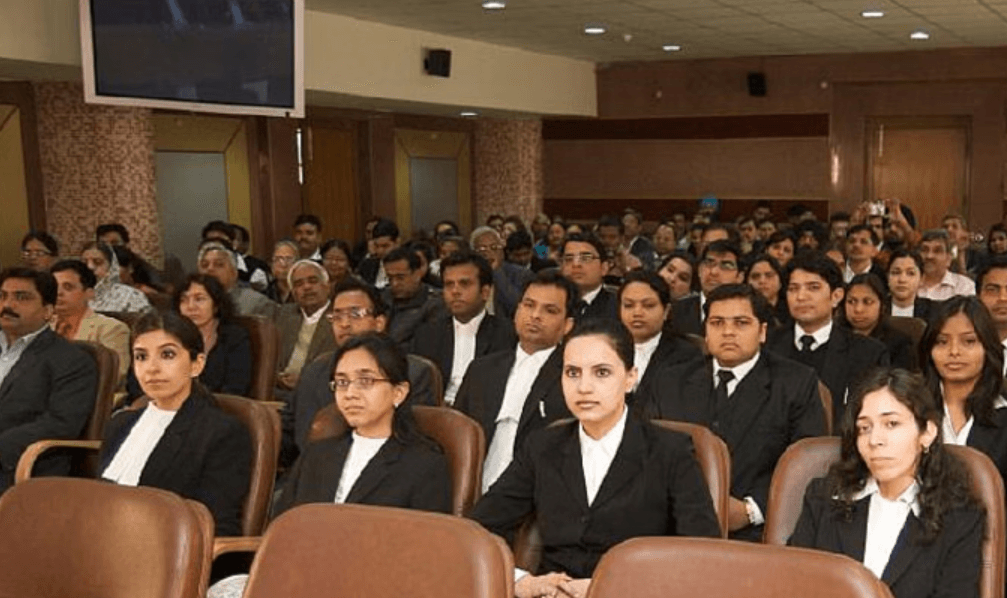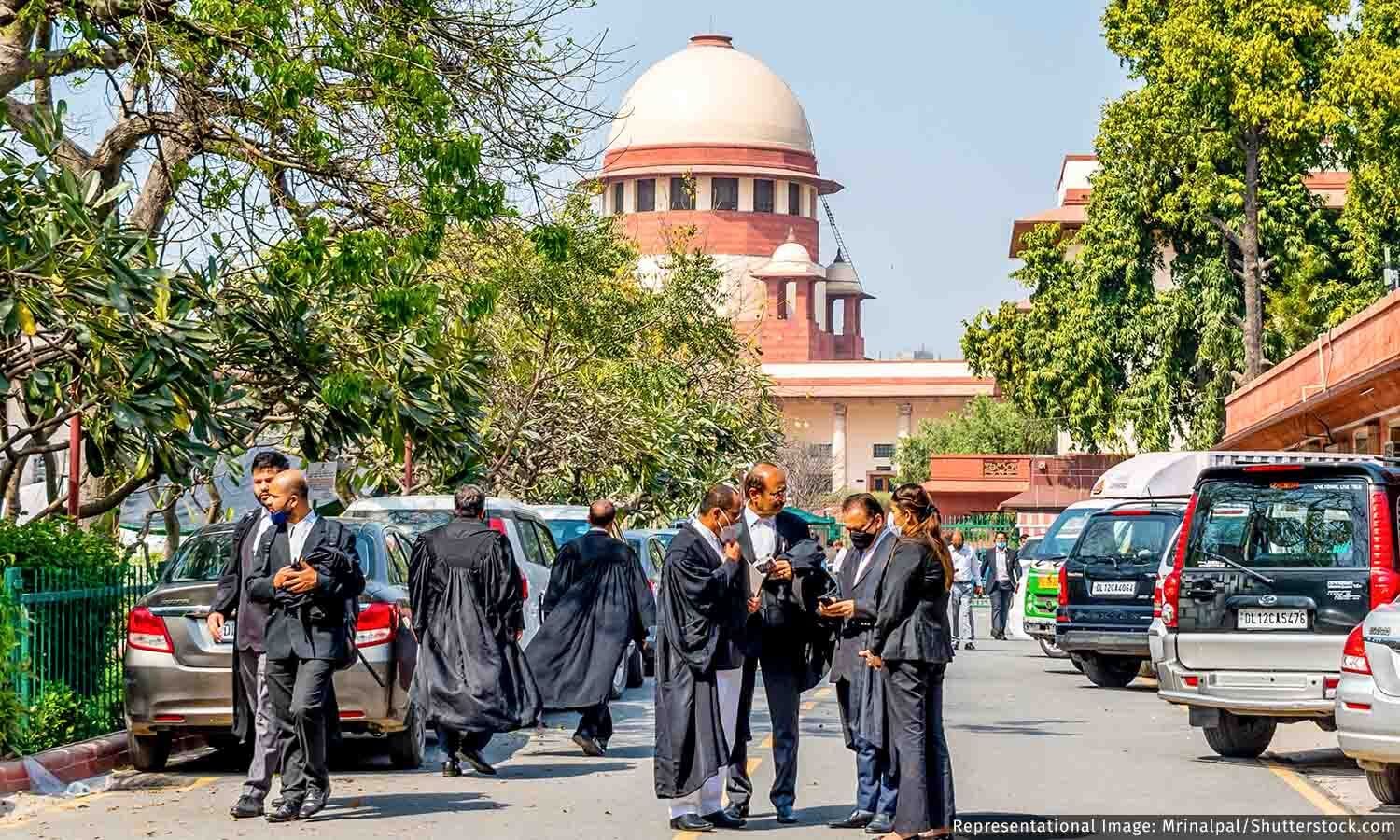India as a society, has had numerous caste, religious, and gender-based disparities since centuries. These disparities are so pervasive that their impact can be seen in the institutions of both private and public sectors. Even the judiciary, which is often portrayed as impartial and fair; is not free from these biases. This discriminatory character is reflected in the judiciary’s structure and functioning.
According to 2023 Bar Council of India data, from 15 states, women lawyers comprised 15.31 per cent of the overall enrolment of 15,42,855 lawyers that is 2,84,507. Women’s participation decreases with increasing hierarchy in the judicial field.
As per data provided by the Union Minister of Law and Justice, in December 2023, 492 of the 650 High Court justices appointed between 2018 and 2023 came from the General Category which is 75.69 per cent of the total, 23 are of the SC category, 10 representing the ST category, and 76 from the Other Backward Classes.
From its establishment to now, only 16 Muslim judges have served as a Judge in the Supreme Court.
According to data, In 2023, 13.4 per cent of judges of the High court were women. Whereas situations in Lower courts are much better, the number of female judges in subordinate courts has risen from 27.6 per cent in 2018 to 36.3 per cent in 2023.
Justice M Fatima Beevi was appointed as the Supreme Court’s first female judge in October 1989, 39 years after its establishment. Since the inception of the Supreme Court, only 11 women judges—comprising just about 4 per cent of all appointments—have been elevated to the bench. Despite these appointments, the positions of Chief Justice, Attorney General, and Solicitor General have yet to see a woman at the helm even after 74 years.
Women’s struggle for the right to practice law
Entering the legal field was not easy for women; they had to fight to secure their right to practice law. In India, women were not allowed to practice law before 1921, in this year a historical incident took place in the field of law, with the intervention of the High Court of Allahabad Miss Cornelia Sorabji‘s application to practice law was accepted, which made her the first woman to join as an advocate in India. This incident further paved the way for the passing of the “Legal Practitioner(women) Act, of 1923,” which established a legal entitlement for women to enter into law practice.
Challenges ahead for the women in judiciary
Even after a century of the “Legal Practitioner(women) Act, of 1923” the number of female practitioners in the judiciary remains low, and those who have secured positions confront several hurdles in continuing their careers. These issues have persisted for years not only because of gender inequality embedded in society but the judiciary, as an institution, has not made significant steps to establish gender equality in the workplace.

According to a survey done by Reuters in 2022, 60 per cent of women lawyers quit practice between the ages of 35 and 55, which is considered the peak of their careers, due to a lack of balance in work and life. This imbalance is the result of both patriarchal expectations of society which presume that women should take responsibility for handling household matters and child care, and patriarchal norms which prevail in the Indian Judiciary where women are considered less trustworthy by both colleagues, seniors and clients.
Women feel constant pressure to finish their tasks by the end of the day due to security reasons, and the court’s infrastructure does not adequately meet their needs, there is a scarcity of restrooms and toilets for women, nominal presence of creches, and an unwelcoming atmosphere in shared workspaces.
In 2019, the Vidhi Centre for Legal Policy surveyed 665 district court complexes across India to assess infrastructure based on the National Court Management Systems’ (NCMS) Baseline Report from 2012. The findings revealed that nearly 100 court complexes had no toilet facilities for women, and among the 585 complexes (88 per cent) that did have washrooms, 60 per cent were not fully operational.
Even the availability of creches is insufficient, after 65 years of its establishment in 2015, the creche was inaugurated at the Supreme Court of India premises, furthermore, in Delhi High Court it opened in 2022. And till today it is not available at every court in India.
While addressing a two-day “National Conference of the District Judiciary” organised by the Supreme Court on 31st August and 1st September 2024, Chief Justice of India, D Y Chandrachud, pointed out that just 6.7 per cent of district court infrastructure is female-friendly, and stressed on the importance of improving the situation.
In a report of The New India Express, Seema (changed name), a lawyer from Thiruvananthapuram talked about incidents of offensive comments and unwanted physical touches from senior staff and colleagues. In the same report advocate Sandhya Raju George raised her concern that the Kerala High Court lacks an Internal Complaints Committee (IC) for lawyers, there is an IC for court staff, but no similar mechanism exists for lawyers and other female workers who spend significant time in court complexes.
It has also been observed that clients often prefer male lawyers, because of the perception that women are soft and less assertive. Also, people tend to be sceptical about female lawyers’ consistency of working days due to the common belief that women are also responsible for managing childcare and household duties.
While addressing an event organised in remembrance of “100 years of women in law in the country” Former Supreme Court Justice, Hima Kohli “Gender discrimination, gender bias, which was rampant from early days, has overtly subsided but continues to persist in surreptitious force. Women lawyers have often encountered stereotypes that question their competence and their authority, the perception that women are less aggressive or authoritative compared to their male counterparts.”
The need for more women in judiciary
To create a society free from biases and exploitation, it is essential to ensure every community is represented in its institutions in proportion to its population. For marginalised communities, proportional representation can provide a stronger voice in decision-making, ensuring that policies reflect their interests instead of those of the ruling class.

So, an increase in the number of women in courtrooms will counter structural inequality in the legal field which traditionally favoured the ruling class, upper caste and male-domination and often does not pay much attention to issues concerning women and the working class, and provide a crucial challenge to class, caste and gender oppression in the legal system and give space to voices that can advocate for issues like wage inequality, gender-based discrimination, and workers’ rights, promoting justice for marginalised groups.
The presence of women in courtrooms will make sure that in serious cases related to crimes against women, women petitioners will be able to explain information and their perspective to female lawyers more comfortably and present their case in court more accurately, which eventually contributes to getting justice.
It will help in reducing the incidents of harassment that female lawyers and clients used to face from male lawyers.
In order to make any space safer for women we need to make it accessible to more and more women.
When women are missing from senior roles in law departments, offices, or as judges, judgments can become biased, it is evident by the statement of a High Court lawyer, given to The New India Express, “Comments on women’s clothing, statements about a wife’s duty, and judgements based on a woman’s profession are symptoms of this bias. And it’s the public who suffer as a consequence.”
Initiatives for change underway
The Chief Justice of India D Y Chandrachud also expressed his concern to increase the participation of women in the Judiciary, emphasised the need to enhance gender-equitable infrastructure and asked male lawyers to come forward and take responsibility for child care and family.
Petitions have been submitted to the Supreme Court advocating for a sufficient representation of women in the Bar Council of India (BCI) and the 21 State Bar Councils by lawyers as presently, the BCI, which comprises 20 members, does not include a single woman among its ranks.
While Speaking at the inauguration of the district and sessions court, and chief judicial magistrate court, in Mayiladuthurai, CJI said “As a society, we force the responsibility of family care only on women and then use that very bias against women that we hold, to deny them opportunities.”
Justice Hima Kolhi called gender biases in the legal field an important hindrance to equality and progress.
She highlighted the need to tackle gender stereotypes about women lawyers by raising awareness among judges and legal professionals and stressed the significance of workshops, discussions, and anti-bias training to help minimise prejudice against women in the legal field.
Achieving gender equality in the legal profession requires support from all parts of society, starting with families and communities where women face initial challenges. But the most vital steps include policy changes which advocate equal pay and parental leave to build a fairer environment for women in law.






